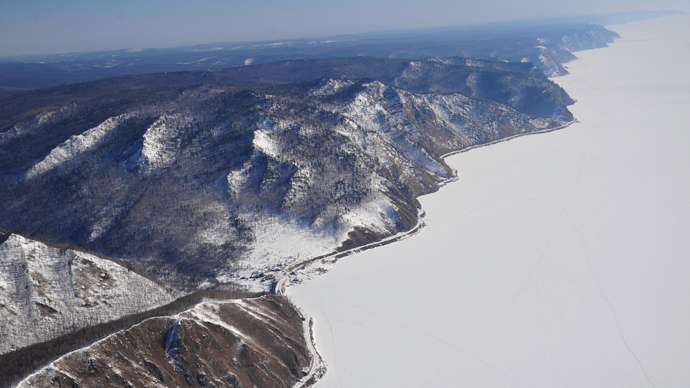24,000-year-old Siberian boy links Western Europeans to Native Americans

The anthropological world was stunned when the recent genome study of the 24,000-year-old remains of a small Siberian boy revealed that the child was both part-Western European and modern Native American.
This turns on its head the long-held notion that those who first
settled the Americas (themselves descendants of Siberian
populations) were related to East Asians, as well as raising
questions as to when the Americas were first settled – and by
which peoples. New evidence gleaned from the three-year-old
Mal’ta boy found near Lake Baikal in Eastern Siberia shows that
the ancient Native Americans could in fact be a mixture between
West Europeans and an ancient East Asian people, according to a
study published in the journal Nature on Wednesday.
The study demonstrates that as much as 30 percent of this
brown-haired, freckled boy’s DNA can be found in modern Native
Americans, which suggests that their modern population came
directly from Siberia.
The boy’s body was discovered by Russian archaeologists in the
1920s, lying under a slab of rock, wearing ancient jewelry – an
ivory diadem, a bird-shaped pendant and a bead necklace – all of
which point to an Upper Paleolithic European culture. Some
figurines were found at the site as well.
All of this was excavated by the scientists and studied for two
decades, then subsequently stored in museums in Leningrad (now
St. Petersburg).
But a team led by Danish ancient DNA expert, Eske Willersley,
from the University of Copenhagen, recently got to work trying to
find a direct connection between East Asia and the American
Indians. The resulting research was published in the journal
Nature on November 20.
Willersley set about extracting mitochondrial DNA from the boy’s
arm, but was underwhelmed when it turned out to belong to the U
lineage – which means modern Europeans who settled on the
continent over 44,000 years ago. The lineages common to Native
Americans are A, B, C, D and X.
But having analyzed the so-called nuclear genome, which carries
more evidence of our ancestry, he told AFP that "the result
came as a complete surprise to us."
Firstly, the boy was from all over Europe: the two examined
genomes show that modern Europeans had traveled much father into
Eurasia than we had previously assumed.
Kelly Graf, an assistant professor at the Center for the Study of
First Americans and Department of Anthropology at Texas A&M,
who helped Willersley in his research, told Science Daily that
the find “shows he had close genetic ties to today's Native
Americans and some western Eurasians… Also, he shared close
genetic ties with other Ice-Age western Eurasians living in
European Russia, Czech Republic and even Germany. We think these
Ice-Age people were quite mobile and capable of maintaining a
far-reaching gene pool that extended from central Siberia all the
way west to central Europe."
Secondly, the Native American connection was finally found.
"Our study proves that Native Americans’ ancestors migrated to
the Americas from Siberia and not directly from Europe as some
have recently suggested," Graf said. This sort of intricate
and complete DNA mapping of a human is the oldest of its kind
ever performed.
However, given the boy’s European-Native-American mix, it was
strange that the boy had no connection to modern East Asians.
This has led Willersley and his team to suppose that the ancient
Native Americans had already broken off ties with the East Asians
before interbreeding with the Mal’ta people, to whom the boy
belongs.
This population must then have traveled over the frozen Beringian
land bridge that used to be between Siberia and Alaska. This
consequently resulted in the creation of the modern Native
Americans.
Intriguingly, even these new groundbreaking discoveries don’t
fully solve all the remaining puzzles.
For one, ancient Native American skulls look more European than
modern ones. And another one is that the X lineage found in
modern Native Americans sometimes occurs in Europeans as well.
Also, the exact time and place of the mixing – whatever
combination it was – cannot yet be determined. Likewise, the
bigger question that this inevitably leads to is when the
American continent was first settled.
They can be answered in time, but will require dipping into a
much more ancient DNA pool. However, we now know that Siberia is
an ancient treasure trove that holds the secrets to how Americans
and Europeans interbred and settled thousands of years ago.














